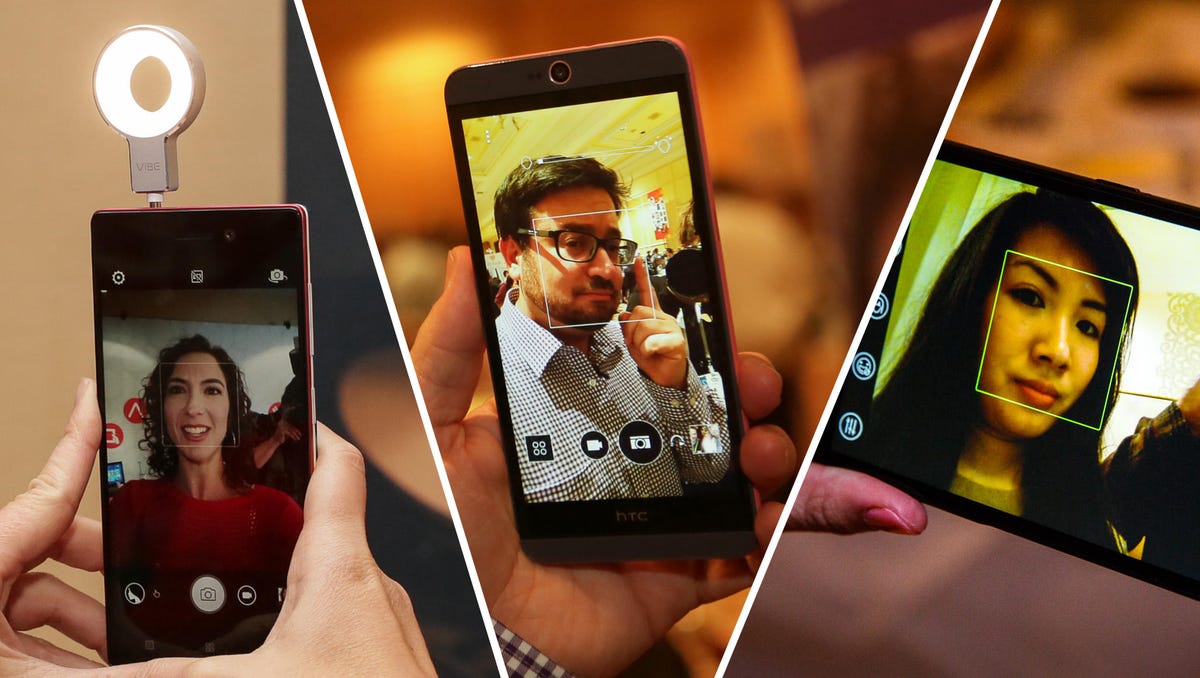 Enlarge Image
Enlarge ImageCNET
LAS VEGAS — Although phones have had self-portrait camera lenses for a decade, only in the last year or so has the “selfie” risen to the forefront of popular culture. Undoubtedly, some of that is due to social media networks, which make it easier for users to post and share their vanity shots. But whether or not you love them or loathe them, people aren’t going to stop taking photos of themselves anytime soon — even if front-facing cameras on handsets tend to be less powerful.
Related stories:
- The smartphones of CES 2015 (pictures)
- Beyond plastic: Talking new directions in 3D printing
- The weird tech we love and hate at CES 2015 (video)
That last part changed at CES 2015, though, as several mobile manufactures launched handsets with beefed up front-facing cameras. In hopes of enticing new consumers, companies now more than ever are catering to the selfie generation.
LG, for instance, introduced an extra component to its already selfie-minded camera feature, GestureShot. Seen in recent LG devices like the G3 , GestureShot enables users to activate the camera’s shutter by signaling a fist with their hands. But due to the popularity of self sticks (long poles that you can mount your handset on to take steadier pictures at farther distances), LG’s G Flex 2 can sense when it is being lowered down and raised up for a selfie. When you’re lowering it, the phone will automatically display the last photo taken, saving you a few extra taps when you want to check how the last shot turned out. And you raise the handset back up again for another picture, it will switch back into camera-mode.
Meanwhile, Lenovo set out to solve the dim lighting that often plagues selfies. It launched the Vibe X2 Pro , which works in conjunction with a small flash accessory. Equipped with eight LED bulbs, the flash plugs directly into the handset’s 3.55mm headphone jack. After you press its rear button to turn it on, you have 3 seconds to pose until the device’s camera shutter goes off. What you end up with is a brighter, better selfie.
Best smartphones for selfies (pictures)






+17 more
Even budget devices are getting into the mix. ZTE bumped up the front-facing camera specs of its competitively priced Grand X Max+ phablet from 1 to 5 megapixels. The shooter has an 88-degree wide-angle lens as well, meaning you can fit more space into the frame of your photos — something ZTE said would be useful not only for selfies, but also (and I loathe this term myself) “groupies.”
In addition, we’ve seen other smartphones here at CES sporting more than your usual 1.2- or 2-megapixel front facing camera. One is HTC’s Asia-bound Desire 826 has an “ultrapixel” front-facing camera, which is a branding term usually reserved for its more powerful rear-facing shooters. Then there’s the Saygus V2 (pronounced “V-squared”) — it has a 13-megapixel front camera with optical image stabilization, a first of its kind.
Though big improvements with front-facing cameras are limited due to size restrictions (users are willing to have some give in thickness with a rear shooter, but not so much with the front), manufacturers are still able to improve them further through software features and accessories. We’re willing to put money on the fact that progress will only continue, but this CES in particular will go down as the one where selfies reigned supreme.



